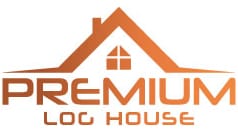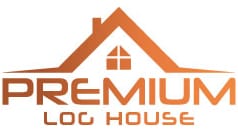When it comes to heating your log cabin home, there is a wide range of options available to ensure comfort and energy efficiency. This guide will explore the different heating systems you can choose from, helping you make the best decision for your log cabin lifestyle.
1. Wood Burning Stoves and Fireplaces
Wood burning stoves and fireplaces are classic heating options for log cabin homes, providing a warm and cozy atmosphere.
a. Wood Burning Stoves
Wood stoves are an efficient and traditional way to heat your home. They offer a combination of radiant and convection heat, making them ideal for log cabins. When choosing a wood stove, consider its size, heating capacity, and energy efficiency.
b. Fireplaces
Fireplaces add a touch of elegance and charm to your log cabin home. Opt for a high-efficiency fireplace with a tight-sealing glass door for optimal heat output.
2. Radiant Floor Heating
Radiant floor heating provides a comfortable and even heat distribution throughout your log cabin home. This system warms the floor, which in turn heats the room.
a. Hydronic Radiant Floor Heating
This type of radiant heating uses hot water flowing through tubes embedded in the floor to heat the space. It is energy-efficient and suitable for large residential log cabins.
b. Electric Radiant Floor Heating
Electric radiant heating systems use electric cables or mats installed under the floor to generate heat. These systems are ideal for smaller spaces like garden rooms and garden offices.
3. Forced Air Heating
Forced air heating systems use a furnace to heat the air, which is then distributed through ducts and vents. These systems are versatile and can be adapted for log cabin homes.
a. Gas Furnaces
Gas furnaces are a popular choice due to their energy efficiency and low operating costs. They can be used with propane or natural gas, depending on your location and preferences.
b. Electric Furnaces
Electric furnaces are a suitable option for areas with limited access to natural gas. They may have higher operating costs but are generally easier to install and maintain.
4. Heat Pumps
Heat pumps transfer heat from the outside air or ground to heat your log cabin home. They can also be used for cooling, making them a versatile choice for year-round comfort.
a. Air-Source Heat Pumps
Air-source heat pumps extract heat from the outside air and transfer it indoors. They work best in moderate climates and are an energy-efficient option for log cabin homes.
b. Ground-Source Heat Pumps (Geothermal)
Ground-source heat pumps, also known as geothermal systems, use the stable temperature of the earth to provide heating and cooling. They are more expensive to install but offer greater energy efficiency and lower operating costs in the long run.
5. Solar Heating
Solar heating systems harness the power of the sun to heat your log cabin home, making them an eco-friendly option.
a. Active Solar Heating
Active solar heating systems use solar collectors to heat water or air, which is then distributed throughout the home. They require more complex installation but offer significant energy savings.
b. Passive Solar Heating
Passive solar heating relies on the strategic design and orientation of your log cabin home to capture and store heat from the sun. This approach requires minimal equipment and can be incorporated into the design of your custom log cabin.
FAQs
Q: What is the most energy-efficient heating option for log cabin homes?
A: Geothermal heat pumps and solar heating systems are the most energy-efficient options for log cabin homes. However, the best choice will depend on factors such as your location, climate, and budget.
Q: Can I use a combination of heating systems in my log cabin?
A: Yes, you can combine different heating systems to achieve optimal comfort and efficiency. For example, you might use a wood-burning stove for supplemental heat in addition to a heat pump or radiant floor heating system.
Q: How can I reduce heat loss in my log cabin home?
A: Proper insulation, high-quality windows, and tight construction can help reduce heat loss in your log cabin home. Additionally, incorporating passive solar design principles can also help maximize heat retention.
Conclusion
There are numerous heating options available for log cabin homes, each with its own advantages and disadvantages. When choosing the right system, consider factors such as your climate, energy efficiency, installation costs, and personal preferences. By selecting the best heating option for your log cabin home, you can enjoy a comfortable and energy-efficient living environment that connects you with nature.

